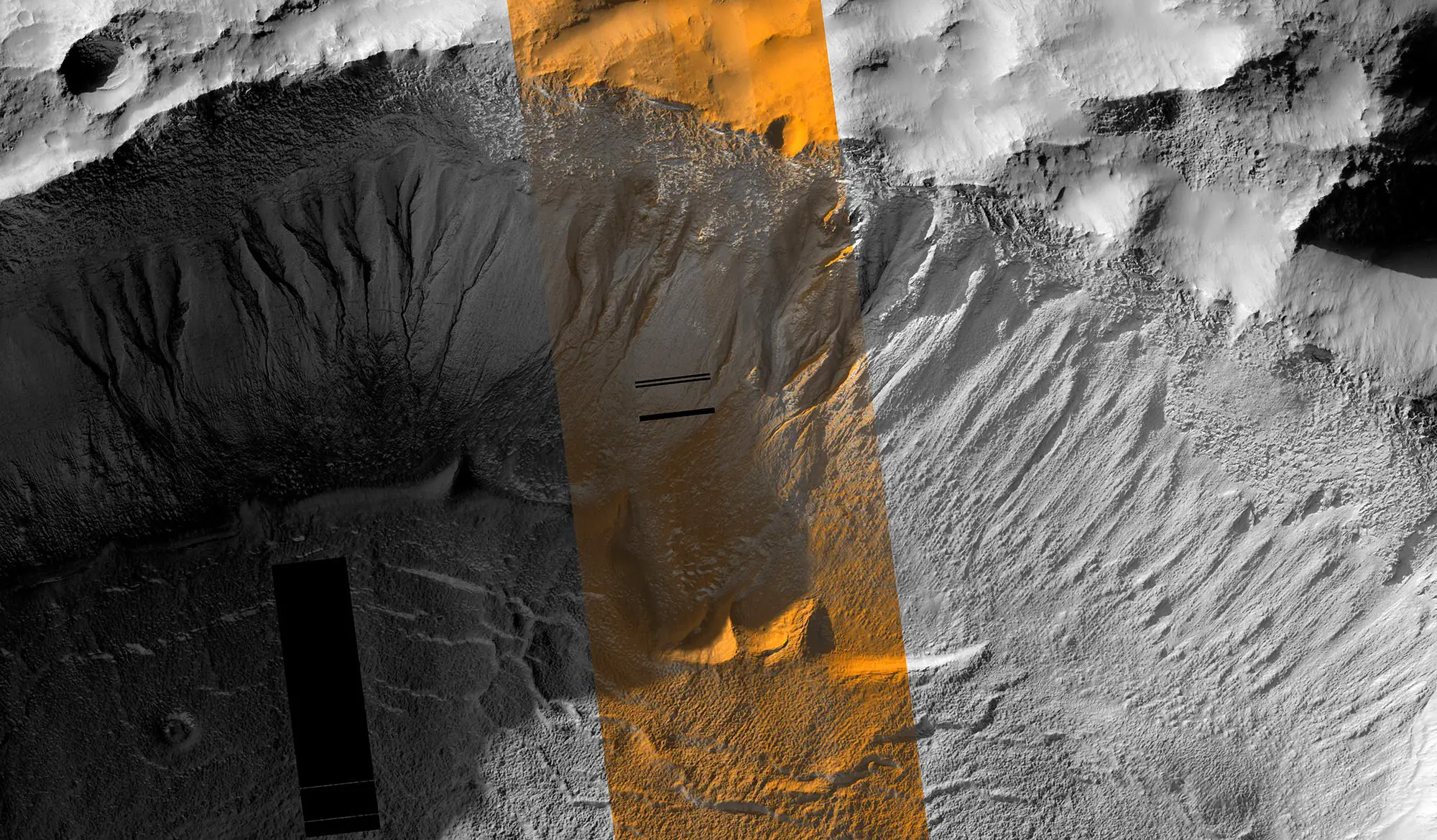

Image of the Terra Sirenum and its gullies captured by the High Resolution Imaging Science Experiment (HiRISE) camera on NASA’s Mars Reconnaissance Orbiter. Credit: NASA/JPL/Univ. of Arizona
Using climate simulations, researchers suggest Mars’ gullies could have formed from melting water ice during periods of high axial tilt, offering a fresh perspective on Martian gully formation and evolution.
According to simulations of Mars’ past climate and axial tilt, gullies observed on the planet’s surface might have been shaped by the melting of water ice during high obliquity periods. These gullies, although resembling water-carved formations on Earth, predominantly exist at elevations where current Martian climate and atmospheric conditions wouldn’t typically support liquid water.
Possible Formative Processes
There have been suggestions that these gullies formed through the sublimation of carbon dioxide (CO2) ice. However, the exact mechanism for this remains uncertain, as the process lacks an Earth analog and the process can’t fully account for the distribution of Mars’ gullies. Another theory posits that smaller quantities of liquid water might have created the gullies under older climatic conditions more favorable for water ice melting. Moreover, prior research indicates that during times of higher obliquity in Mars’ history, water ice could have amassed in areas now featuring gullies.
Simulation Insights
To delve deeper into the potential role of liquid water in shaping these gullies, James Dickson and his team utilized a three-dimensional global circulation model of Mars. This model aimed to depict how Mars’ climate might have varied as its axial tilt changed over the last million years.
They found that at 35° obliquity, locations of current gullies – areas that have abundant water ice near the surface today and likely had tens of meters more within the last million years – reached pressures of more than 612 pascals and ice surface temperatures likely surpassed 273 Kelvin (the melting point of water ice). As a result, melting ice could have stayed liquid during periods of high obliquity, carving gullies in the high-altitude areas where they are currently found.
A New Scenario for Martian Gully Evolution
Utilizing these insights, Dickson and his team present a novel scenario for Martian gully formation and evolution. Their theory combines processes involving both liquid water and the sublimation of CO2.
For more on this discovery, see Gullies May Have Formed by Recent Periods of Liquid Meltwater.
Reference: “Gullies on Mars could have formed by melting of water ice during periods of high obliquity” by J. L. Dickson, A. M. Palumbo, J. W. Head, L. Kerber, C. I. Fassett and M. A. Kreslavsky, 29 June 2023, Science.
DOI: 10.1126/science.abk2464